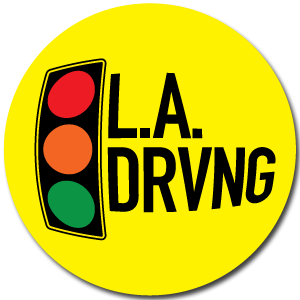OVERCOMING DRIVING ANXIETY & FREEWAY PHOBIA
Freeway phobia—and driving anxiety in general—are far more common than most people realize. Millions struggle with fear related to freeway driving, highway overpasses, merging, high speeds, and unfamiliar routes. For many, these fears can grow to the point of avoiding driving altogether.
But you don’t have to face these challenges alone.
Our Driving Anxiety & Phobia Removal program offers personalized, one-on-one coaching designed to help you confront and overcome these fears in a safe, supportive, and professional environment.
Working with a DMV-certified professional instructor, you’ll follow a customized Driving Exposure Therapy course, built to match your specific needs and comfort level. Whether you’re anxious behind the wheel in general or specifically overwhelmed by freeway driving, we meet you where you are—both emotionally and geographically.
WHAT IS EXPOSURE THERAPY?
Exposure Therapy is a scientifically backed treatment approach that helps people gradually face the situations they fear—safely and systematically. Instead of avoiding freeways, ramps, or even short local drives, you’ll be guided through a carefully structured process that reduces fear over time and builds confidence.
Avoidance often brings short-term relief, but it allows fear to grow unchecked. Exposure Therapy breaks that cycle by helping you form new, calmer responses to driving situations that once caused panic or distress.
This method is proven effective for:
• Driving anxiety
• Freeway phobia
• Panic attacks while driving
• Fear of losing control
• PTSD related to traffic incidents
• Other anxiety-related conditions
HOW OUR PROGRAM WORKS
We use Graded Exposure, a step-by-step method that begins with lower-stress driving situations and gradually progresses to more challenging ones—at a pace that works for you.
Step 1: We begin by identifying your specific triggers—such as merging, speed, bridges, or simply being on the road after a long break.
Step 2: You’ll engage in exposure exercises that gradually increase in difficulty, starting in controlled environments and eventually expanding to more realistic scenarios, like real freeway driving.
Note: Unlike "flooding" methods, which expose clients to intense fears all at once, our approach is gentle, safe, and highly personalized—making it far more effective for driving-related anxieties.
PROVEN, LASTING RESULTS
Exposure Therapy offers lasting benefits:
• Habituation: Your anxiety naturally decreases as your body and mind adjust to the situations you've feared.
• Extinction: You unlearn the negative associations between driving and danger.
• Confidence: You prove to yourself that you can handle challenging situations.
• Emotional Resilience: You become more comfortable managing anxiety without avoidance.
A 2016 study found that exposure-based treatment for phobias continued to provide benefits eight years after completion—demonstrating not just short-term relief, but long-term change.
START YOUR JOURNEY TODAY
Our program has helped many people return to the road with confidence, save time by using freeways again, and regain their independence. Whether you're avoiding driving entirely or just certain roads, this is your chance to take back control.
Ready to make a change? Click here to contact us—we’ll respond promptly and help you take the first step toward driving with confidence.
Freeway phobia—and driving anxiety in general—are far more common than most people realize. Millions struggle with fear related to freeway driving, highway overpasses, merging, high speeds, and unfamiliar routes. For many, these fears can grow to the point of avoiding driving altogether.
But you don’t have to face these challenges alone.
Our Driving Anxiety & Phobia Removal program offers personalized, one-on-one coaching designed to help you confront and overcome these fears in a safe, supportive, and professional environment.
Working with a DMV-certified professional instructor, you’ll follow a customized Driving Exposure Therapy course, built to match your specific needs and comfort level. Whether you’re anxious behind the wheel in general or specifically overwhelmed by freeway driving, we meet you where you are—both emotionally and geographically.
WHAT IS EXPOSURE THERAPY?
Exposure Therapy is a scientifically backed treatment approach that helps people gradually face the situations they fear—safely and systematically. Instead of avoiding freeways, ramps, or even short local drives, you’ll be guided through a carefully structured process that reduces fear over time and builds confidence.
Avoidance often brings short-term relief, but it allows fear to grow unchecked. Exposure Therapy breaks that cycle by helping you form new, calmer responses to driving situations that once caused panic or distress.
This method is proven effective for:
• Driving anxiety
• Freeway phobia
• Panic attacks while driving
• Fear of losing control
• PTSD related to traffic incidents
• Other anxiety-related conditions
HOW OUR PROGRAM WORKS
We use Graded Exposure, a step-by-step method that begins with lower-stress driving situations and gradually progresses to more challenging ones—at a pace that works for you.
Step 1: We begin by identifying your specific triggers—such as merging, speed, bridges, or simply being on the road after a long break.
Step 2: You’ll engage in exposure exercises that gradually increase in difficulty, starting in controlled environments and eventually expanding to more realistic scenarios, like real freeway driving.
Note: Unlike "flooding" methods, which expose clients to intense fears all at once, our approach is gentle, safe, and highly personalized—making it far more effective for driving-related anxieties.
PROVEN, LASTING RESULTS
Exposure Therapy offers lasting benefits:
• Habituation: Your anxiety naturally decreases as your body and mind adjust to the situations you've feared.
• Extinction: You unlearn the negative associations between driving and danger.
• Confidence: You prove to yourself that you can handle challenging situations.
• Emotional Resilience: You become more comfortable managing anxiety without avoidance.
A 2016 study found that exposure-based treatment for phobias continued to provide benefits eight years after completion—demonstrating not just short-term relief, but long-term change.
START YOUR JOURNEY TODAY
Our program has helped many people return to the road with confidence, save time by using freeways again, and regain their independence. Whether you're avoiding driving entirely or just certain roads, this is your chance to take back control.
Ready to make a change? Click here to contact us—we’ll respond promptly and help you take the first step toward driving with confidence.
